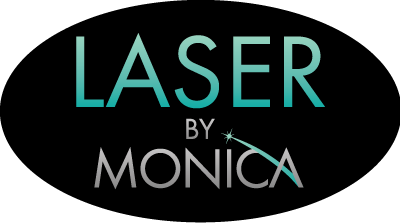
Chemical peels are a revolutionary skincare tool, but they have received relatively little press compared to Botox and laser resurfacing treatments. Few people understand what chemical peels are and how they work. Laser by Monica aims to change that.
At Laser by Monica, a Manhattan-based skincare studio, we are proud to provide the most-trusted chemical peel in New York City. All of our facial peel treatments are customizable and facilitated by experienced professionals. Before booking a session, read on to learn more about all of your options for chemical peels in New York City.
More About Chemical Peels
Contrary to the name, chemical peels do not involve any harsh chemicals. If you get a chemical peel at Laser by Monica, your skin will be treated with lush ingredients like lactic acid (the hydrating protein found in milk), kojic acid (a mushroom-based acid that reduces hyperpigmentation), and ingredients from the hibiscus plant (which promote collagen growth). The exact type and ratio of ingredients will vary depending on your skin type and personal needs.
You may experience a brief stinging sensation after these substances are applied, but your esthetician will have a cooling method readily available. After three to five minutes, the substances will be removed, taking a layer of dull, dead skin away with them. The fresh skin underneath will appear both brighter and more youthful.
Keep reading to learn the answers to the five top chemical peel questions we get asked at Laser by Monica.
1. What Are the Different Types of Chemical Peels?
At Laser by Monica, we offer three types of chemical facial peels: progressive, mid-depth, and deep.
- The progressive chemical peel is our mildest facial peel, and it removes only the stratum corneum, the skin’s outermost layer. Repeated treatments result in a small amount of skin sloughing.
- The mid-depth treatment removes dead skin down to the intra-epidermal layer. Clients experience exfoliation within two to three days after treatment. Some skin flaking occurs after a mid-depth treatment, but it is comparable to the peeling from a sunburn.
- As its name indicates, the deep facial peel penetrates to the deepest intra-epidermal layer. It peels off large sections of dead skin. This is the most intensive treatment, and it takes seven to ten days for the process to be complete.
2. How Should I Prepare for a Chemical Peel?
For one week before getting a chemical peel, avoid facial treatments like waxing, electrolysis, and laser hair removal. If you have recently undergone a surgical procedure on your face, wait for your skin sensitivity to subside completely before booking your chemical peel appointment. Two to three days before your chemical peel, stop using prescription topical facial medications. You should also temporarily stop using facial products containing retinol, beta hydroxyl acids (BHA), alpha hydroxyl acids (AHA), and benzoyl peroxide.
3. What Is the Downtime After a Chemical Peel?
The amount of downtime after a facial peel depends on the type of treatment and the sensitivity of the client’s skin. A client with resilient skin who receives a progressive chemical peel will only need to take extra care of their skin for a day or two. A client with sensitive skin who opts for the deep peel, on the other hand, may need a week or more of downtime. Talk to your esthetician about your skin type and get her expert opinion on how long you can expect your downtime to last.
4. What Will My Skin Look Like After a Chemical Peel?
Your skin may start to visibly peel immediately after treatment or up to 72 hours later. If you received a deep chemical peel, expect the surface of your skin to darken and become crusty. This is a necessary part of removing your dead skin. Some people experience no visible peeling, but this doesn’t mean the treatment failed. It just means you had very little dead skin to remove.
Once the dead skin completely sloughs off, your skin will look plumper and brighter. Hyperpigmentation and wrinkles will become less visible and may even vanish entirely. Your new skin will be soft and have a smooth texture.
5. How Do I Care for My Skin After a Chemical Peel?
After a chemical peel, use a gentle cleanser and moisturizer as needed to control skin flaking. If possible, avoid sun exposure and other things that could irritate your skin.
If you do decide to spend a lot of time outside, always apply sunscreen first. Avoid anything that might cause heavy sweating, such as saunas or strenuous exercise, for two to three days after your chemical peel.
Booking a Chemical Peel at Laser by Monica
If you have fine lines, wrinkles, blemishes, or hyperpigmentation and want to trade all of that for brighter, fresher looking skin, book a chemical peel in Manhattan today. It’s as simple as contacting Laser by Monica. We guarantee you will receive professional treatment, expert care, and the answers to all of your chemical peel questions.
